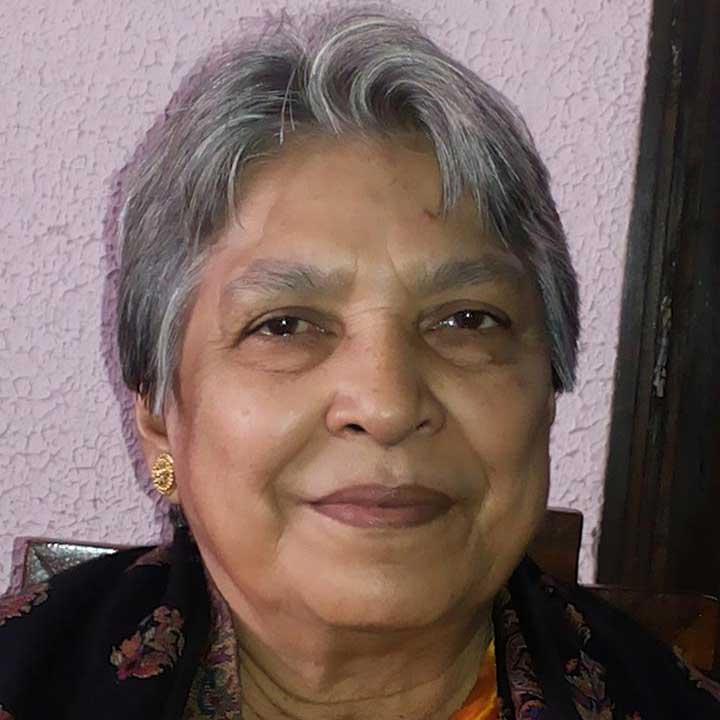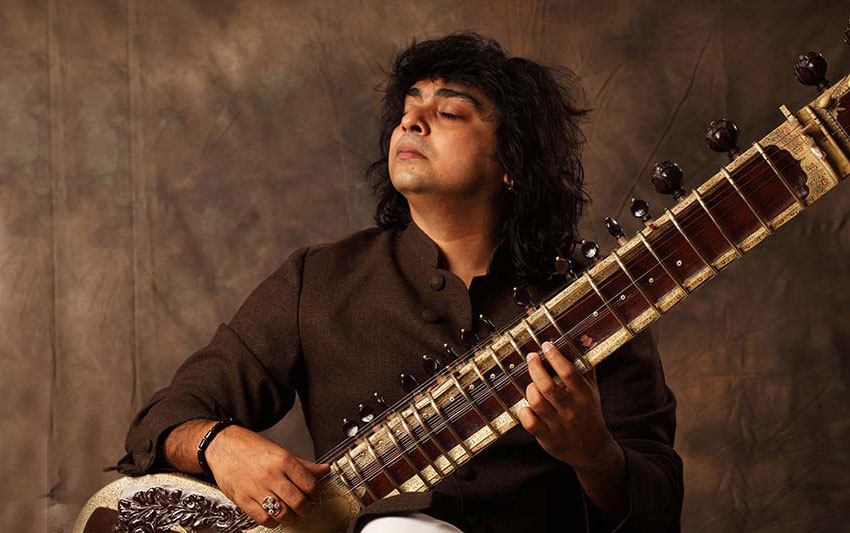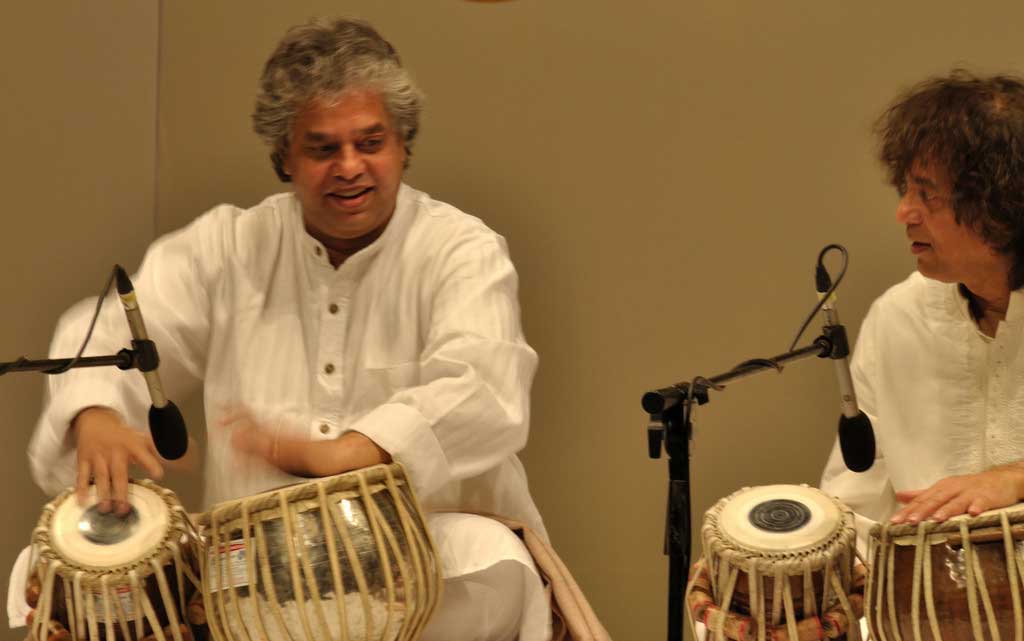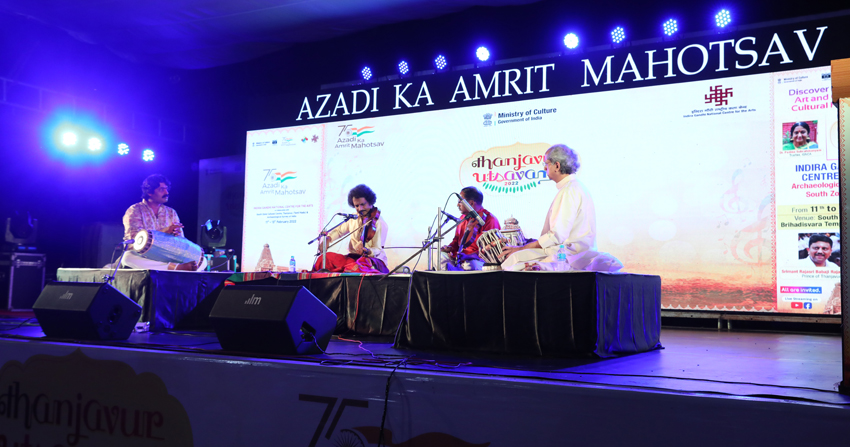Recently Bharatanatyam scholar, teacher and performer Lakshmi Ramaswamy was in Kolkata on invitation from the Indian Museum on the occasion of World Museum Day . I had a chance to interact with her on various aspects like her dance journey, teaching methodology, new chorigraphies etc. Following is an excerpt from our interaction for ClassicalClaps readers.
What routine do you follow to give yourself space to give you maximum time for your dance?
To me every teaching class is a dancing class too. No single role gains priority in the array of roles that I play in my life. I worship dance. But to be honest, in the order of priority, first is the role of a teacher, choreographer then administrator –after which comes the dancer followed by the researcher; not to forget responsibilities of mother, wife and daughter too!
However, it is a longing, if I had enough support, I would want to put the dancer first!
What teaching method do you follow?
I follow the footsteps of my teachers and add my own experiences gathered over the years. My institution, ‘Sri Mudhraalaya’ would be 25 years old next year. The focus is to make students aware of the complex layers that Natya has in store. As the saying goes, ‘it is good to teach fishing than offer fish’, students are equipped with their tools and so they get to use them according to the situation. Importance to both concept and application is given.
I have a time tested methodology, to which I do not hesitate to still add, when I find something new.
At the beginner’s level, alongside teaching the basics of practical dancing, my classes include parallel streams of: exercises, theory, notating through stick diagrams, listening to mythological stories, watching videos of performances, etc.
At a senior level, students become part of my choreography exercises, learn nattuvangam, sit for poetry and painting appreciation andspecialised abhinaya classes. They also get into teachers’ training and hard core learning of Abhinaya Darpana & Natyasastra.
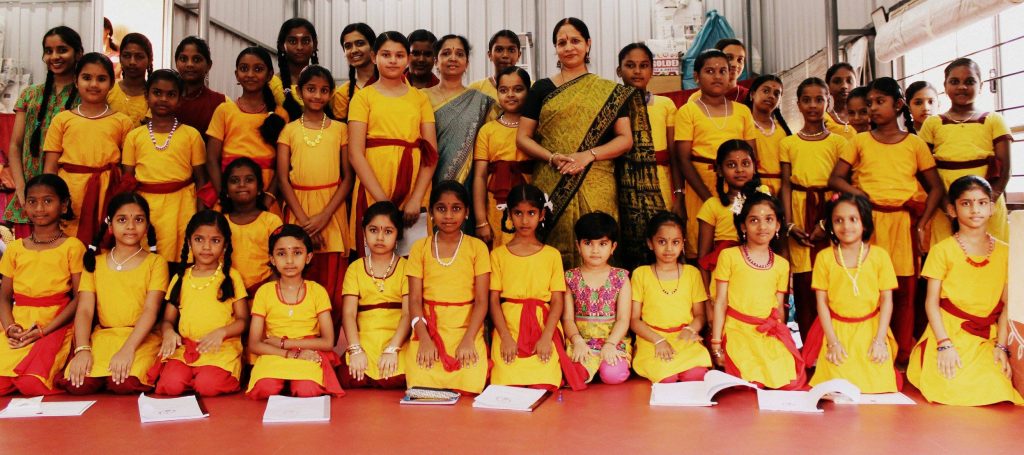
Do you come from a family of artists?
No. But, both my parents were fond of music and dance. My father used to hum and take keen interest in identifying ragas. My mother was instrumental in putting me in a dance class. It was something that was haunting her, since her father did not want ‘dance’ in their home. In fact, my joining a dance class and taking it to an arangetram was disapproved by my grandfather, initially. Later, when he came reluctantly to escort me to my arangetram practice, he was in tears. He went without informing us all of a sudden to a local ‘pumpuhar’ showroom and got me a very beautiful panca-loha Nataraja, which decorates my Pooja room today. After many years, when I was looking for a space to start teaching, he came forward to offer the hall in his house!
I am a first generation dancer in my family and to my big surprise all my students are first generation dancers, too!!
What are the choreographic works which are exclusive to you?
I take special interest to make each of my choreographies different from the much seen lot. On a lighter vein, one of my student’s parent came up to me once and asked, ‘I searched a lot in youtube, the songs that you do are not there? Where can I ‘buy’ them? I smiled and said, ‘yes, they are unique, not yet uploaded!’
On a thoughtful note:
At a time, when dancers used to do tisram, misram and kandamalarippu-s, I chose to compose one in a viloma-kanda (counted as 3+2 instead of the usual 2+3) and a sangkeerna (which I count at 4+3+2 instead of the usual 4+5). I have also made alarippu-s in Tisra Druva and Kanda Matya.
While it comes to Jatiswarams, I observed that most of the earlier ones are in Aditalam, Rupaka or some in Misra, so I requested my friend and musician Dr Vanaty to compose one in Raga Surya in Khanda Chaputalam. Recently in due respect to great musician Dr S Ramanathan, I made a request to Dr Rajkumar Bharati to create a new Jatiswaram which has raga Rama-priya in the Arohana and Hamsa-nadham in avarohana, thereby the ragam can be named as ‘Rama-nadham’. This would be staged in November.
I have also worked on Shabdams which are becoming a rarity in todays performances. The unusual ones are on: Lord Surya, Manmatha, Panca-padais (five weapons) held by Vishnu, A Tevaram, Verses from Tamil Epic Cilappadikaram, Pathinoruadal (11 dances mentioned in Cilappadikaram and early Tamil literature – They are kodukotti, pandarangam, alliyam, mal, thudi, kudai, kudam, pedi, kadaiciyar, paavai&marakkaal)
Similarly I have attempted rare kavutuvams, (there is one on Moon-Nilakavutuvam, as mentioned by Adiyarkkunallaar in his commentary to Cilappadikaram keertanams, varnams, tillanas (one such is a comparison between Vishnu and Muruga, where the poem itself is in sledai* method of writing. (*i.e., the same verse will connect to muruga as well as Vishnu). I chose ragam ‘kalyana-vasantham’; Theragamkalyani was used for muruga, the same verse then sung in vasantha for Vishnu and finally merging into kalyana-vasantham.
I have also tried to recreate the land-based dance forms mentioned in the cilappadikaram; Choreographed a ‘jati’ mentioned in ‘Panca-marabu’ (which is a grammar text dated somewhere in the 5th CE); pulled out verses from 14thcentury literature, pallu, as a folk piece; 17th Century ‘TiruvarangaKalambakam’ & 18th century kuravanji as a full dance drama.
But to call something as my specialty, I could mention about my Sangam Age poems done as full length dance dramas.
Three such literature: Nattrinai, Purananuru and Aingkurunooruwhich have not been attempted by other choreographers. Most of them have taken a lot of inquiry, research and digestion-time to become dance items!
Another fresh attempt was my recent production, ‘Suka-Marga’, where the theme was ‘parrot’. It took nearly two years to compile the units, choreograph and then present.
A fresh look at our past – Has been the undercurrent for most of the productions!
Which dancer/teacher is your role model?
Firstly my Gurus. Each of them opened different doors for my journey.
Padmasri Smt. Chitra Visweswaran, taught me to read in between lines and directed me to be a ‘thinking dancer’; Dr Padma Subrahmanyam whom I consider re-incarnation of Bharata himself, to have taken me as her student generously to teach the ‘karanas’; Padmabhushan Kalanidhi Narayanan who made me breathe fresh air when I was congested by my own inhibitions and Dr S Raghuraman who held my hand like a toddler’s to understand the nuances of 2000 year old poems of a bygone era. Not to forget Smt Indira Krishnamurthy in Tirunelveli, who did my arangetramby making me understand what classical dance was.
Many stalwarts have inspired me in their own way. I cherish Dr Swapna Sundari’s abhinaya and research, Smt. Nandini Ramani’s gracious inputs, Ms Leela Samson’s composure, the down-to-earth groundedness I observe in the Dhananjayans, accepting my disagreement with all grace by CVC sir! The list is actually long. Somehow, I look for goodness in each person I meet and when I find it I am inspired and try to imbibe those qualities.
What qualities do you admire in the person?
More than being a good dancer or a famous person, what hits me, is commitment, humility and honesty!
Besides dance what other qualities do you wish to inculcate in your students?
Relationships. Many of my classes, do not end without making a mention of holding hands together and helping each other. More than being a good dancer, it is important to be a good human. Respecting elders, understanding values and being proud of our culture and ethos is what I strive to inculcate in my students.
Tell me in detail about your journey in working with Sangam right from start to finish.
It all started with a phone call from the then principal of Music College Chennai, Smt S Rajeswari. She asked me if I could attempt a full production in Tamil. In the evening I went to my Tamil teacher Dr S Raghuraman, to know which of those literature would probably suit a visual media. Without any little hesitation, he started explaining the beauty of the Sangam Age poems, an introduction session that lasted a solid three hours exclusively for me!
I was dumbstruck by the greatness of my mother tongue as well as ashamed of not making any effort to know that, till then. The next day, he handed over his book, a copy, of the compilation, the ‘nattrinai’. Nattrinai is an anthology with nearly 400 poems contributed by various poets through a period of nearly 100-200 years. I brought it home and started noting down the poems that would be good enough to attempt choreographing. At the end, from the chosen 25 songs, I tried putting songs in a story line which finally came up to 11 songs. I used the Tolkappiam (The grammar text for tamil language) verse to introduce the five landscapes with an Anjali and went on with the story line:
- The saki asking the heroine about her secretiveness
- The heroine confiding her love for the hero
- The hero leaving her to fetch wealth for their marriage
- The heroine lamenting the separation
- The saki, instigating the heroine to elope with her love
- The foster mother secretively finding how her daughter lives a life of ethics
- The hero who expresses his pangs of separation
- (His coming back with wealth and eventually finding new relationship) The heroine questions him and sends him away
- The panan (singer, a friend of the hero) who makes an attempt to pacify her and end displeasure
- The saki, turning down the panan and instructing him to tell the hero, that He should make his own effort to make the heroine happy
- The hero coming with a guest to their house (it is a tradition that the heroine has to serve guests without showing personal unhappiness), thereby they unite (and happily live ever after) – done as a tillana with verses
Titled, ‘Sangamum Sangamamum’, (Meaning: sangam-sangam age, sangamam-coming together), this work was greatly appreciated and I was commissioned to take up yet another Sangam literature, two years later. With hesitation to attempt male characters, having all girls as students, it chose one another poem of ‘aham’ genre, ‘Aingkurunooru’. This work has 100 poems for eachof the 5 landscapes, totalling to 500 songs done by 5 different poets. This was titled, ‘AindhilIrandu’ (Meaning aindhil – in five, i.e., the five landscapes, irandu – two (the couple in love).
https://youtu.be/lpQtQv65vvg?t=1
Later when I was again reading some other works, I wanted to attempt a literature of ‘Puram’ genre, and I dared to use my own students in male characters, thus was made Purananuru. This production was titled, ‘Andhanaa Lumvandhidaat O’ (Meaning: will those precious days come back?)
Since Puram songs would not be suitable to be fixed in a story line, I had chosen two characters who would make a conversation, which would both serve as compere and interlink the songs, a grandfather and a granddaughter. My own teacher took part as the grandfather. The best compliment came from the ‘Dinamalar’ as a review, where the journalist, said, ‘I have never been to a classical dance concert; infact, wouldn’t want to do so at all. I always felt that classical music and dance was meant only to a particular society. But after watching this production, I am very happy that I made it to the show and now will think of attending classical dance concerts!’
How do you wish to flower your uniqueness in dance and not just be another dancer?
I stay as a student forever. The interest in history, Indology and grammar has nourished my understanding. Same old stories sometimes, reveal a new angle and simple motifs like a parrot and lotus are greatly inspiring!
What was instrumental in orienting you into dance?
God’s will & my mother’s wish.
Due to pressures of life, everytime I wished to move away from dance, dance pulled me back into its fold. Long before, I was just a happy dancer, I never thought I would write on dance, research or choreograph. I just allowed myself to go with the flow what life brought me to.
Any other point?
The international Fulbright fellowship was an important event in my life. Along with the honour of being known as a ‘fulbrighter’, experience in living in a distant land and knowing people and different arts was a real overwhelming experience.
At the end of the day, I am much satisfied, when mothers of teenagers come and tell me, ‘what magic did you do? The adamant girl has now turned to be a girl who shows respect and understands responsibility’…. Then I find much purpose both as a teacher and the art itself!
Now, I eagerly await my institution Sri Mudhraalaya’s 25th year celebration. Look forward that all my students around the globe would come and happily hold hands together, in a new theme, of course!!




